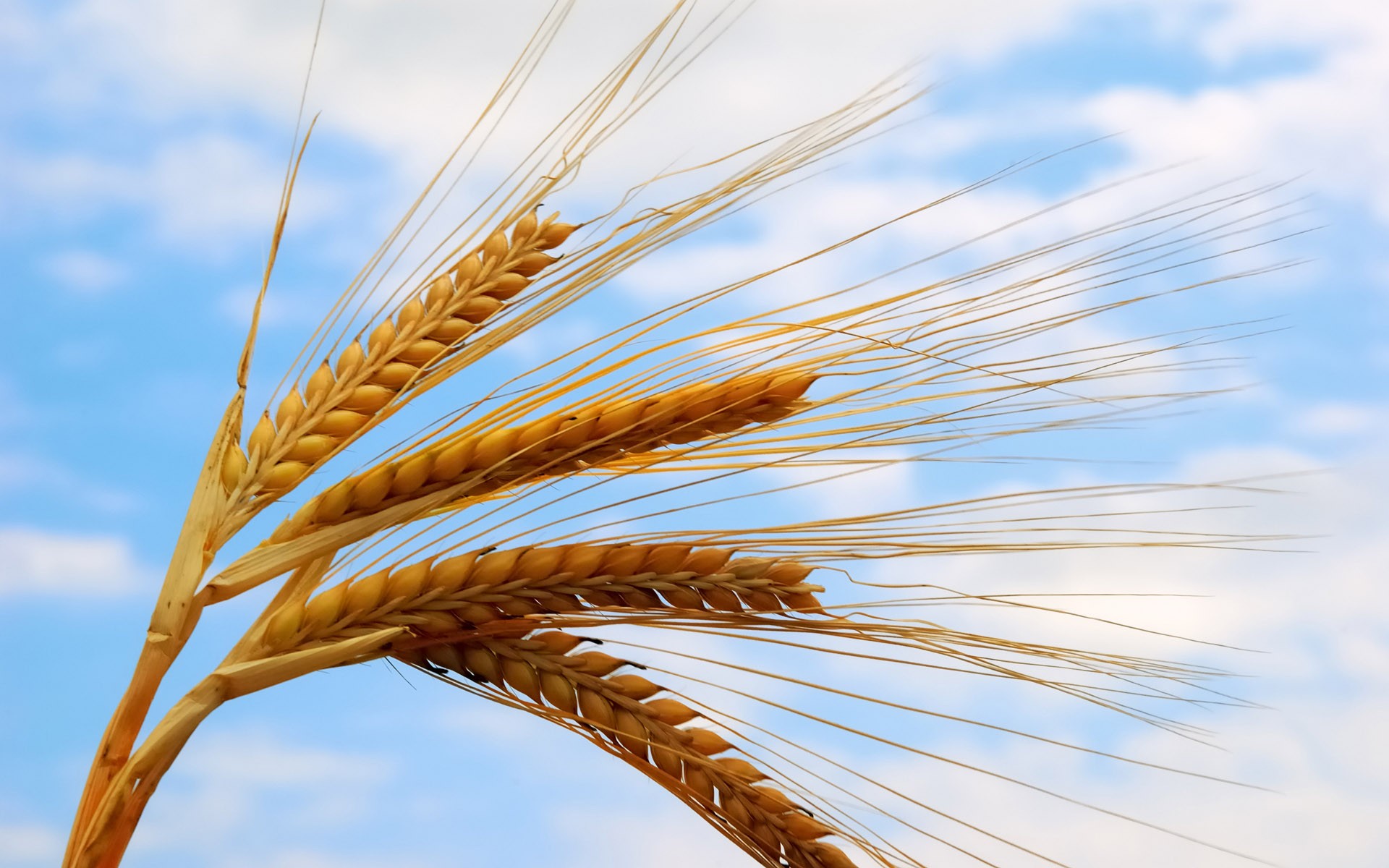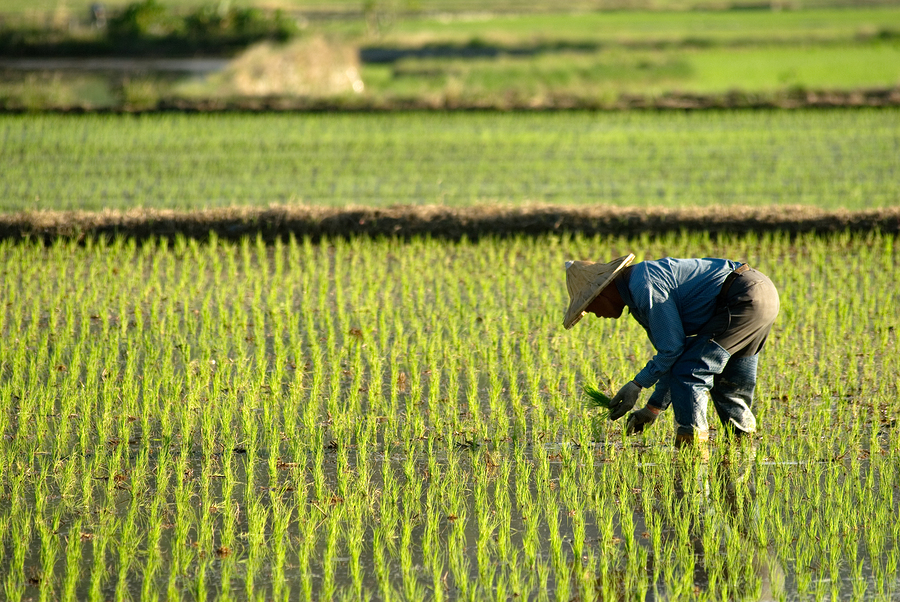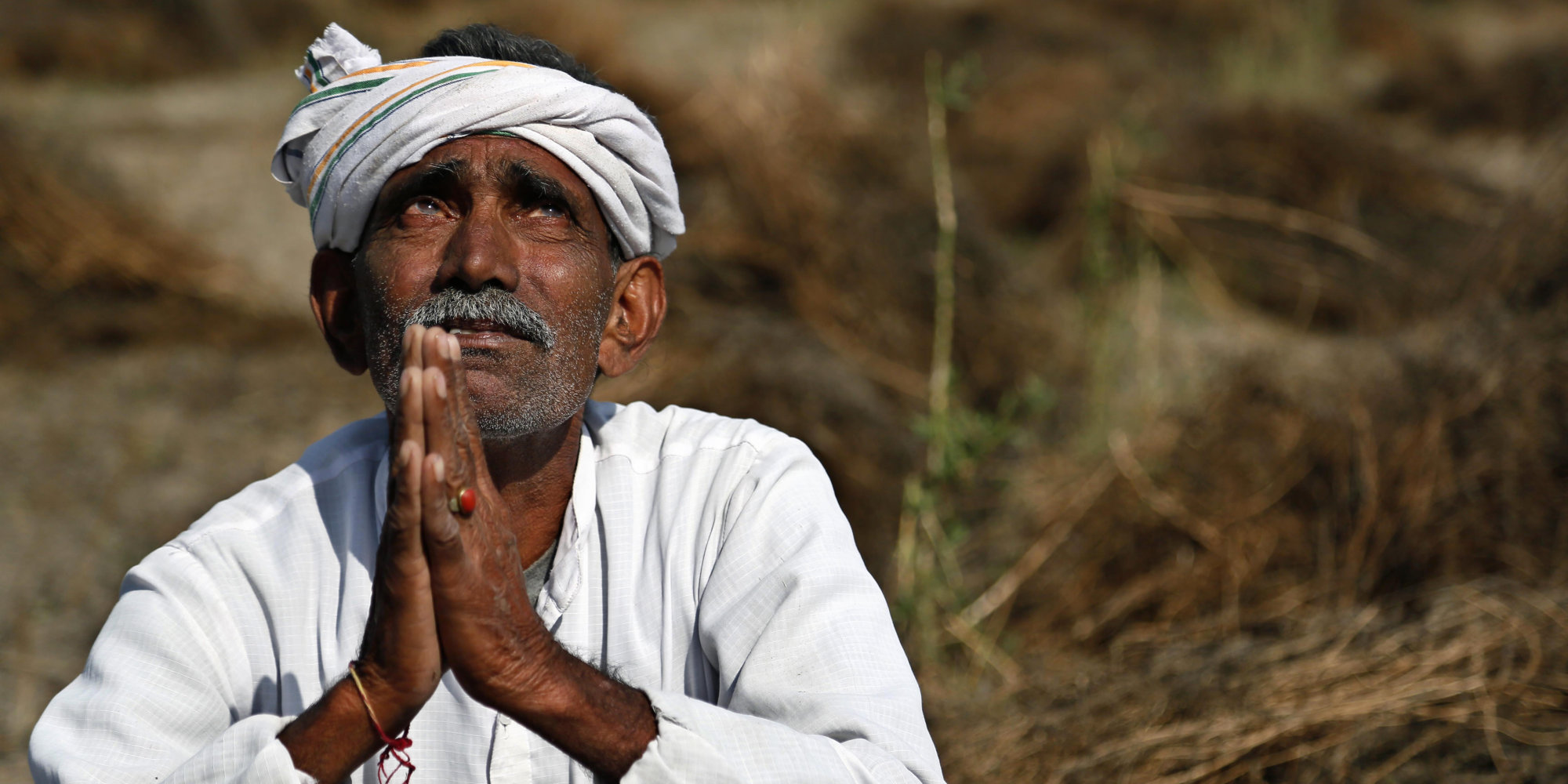Crop Insurance in the USA (2010)
As its proponents hoped, crop insurance has become the largest single source of financial protection to farmers. From insuring 182.2 million acres in 1997, the program has grown to cover more than 264.6 million acres, a slight drop from the 272.7 million acres in crop year 2008. According to National Crop Insurance Services, the program is meeting the Congressional mandate of insuring 80 percent of insurable farmland. There are two kinds of crop insurance: crop-hail, which is provided by the private sector, and multiple peril, an all-risk coverage underwritten by the private sector and the federal government and serviced mostly by the private sector. Crop-hail insures against loss of the value of a crop as a result of damage by hail. Multiple peril insurance covers loss of crop value as a result of all types of natural disasters, including drought, excessive moisture and unusually hot weather. There have been sweeping changes in the federal multiple peril crop insurance program in recent years. Up to 1995, only about one-third of farmers bought federal multiple peril crop insurance because, in the event of a disaster, they could generally rely on Congress to bail them out with disaster assistance and emergency loans. With the passage of reforms in 1995, Congress made it harder to justify legislation granting disaster. It also took other steps to encourage farmers to buy insurance against loss of income due to natural disasters, requiring new types of products, such as revenue protection, to make crop insurance more attractive and subsidizing a portion of the basic traditional coverage that protects against loss of yield. These efforts have paid off. Despite intense hail storms, widespread flooding and large price swings in 2008, there was no need for Congress to enact disaster assistance legislation. RECENT DEVELOPMENTS Premiums and Losses: Total multiple peril crop insurance (MPCI) premiums for crop year 2009 (catastrophic and additional business combined) were a little lower than last year’s total of $9.9 billion. In 2009 MPCI premiums totaled $8.94 billion. The number of acres insured was also lower, dropping from 272 million to 265 million in 2009. In 2008 MPCI premiums were up, due in part to rising commodity prices. Premiums for crop year 2008 increased almost 50 percent over the previous 12 months, according to data from the Federal Crop Insurance Corporation (FCIC), but the industry paid out more than $8.6 billion to farmers due to crop losses and decreases in commodity prices. States with the highest MPCI premium volume in 2009 were Iowa, Kansas, Illinois, North Dakota and Texas. However, only Kansas and Texas reported increases over the previous year. North Dakota saw premiums drop more than 33 percent, the largest percentage decrease of any state, and Nevada, with comparatively low MPCI volume, registered the largest gain. However, in North Dakota, premiums have tended to fluctuate widely, with premiums almost doubling in 2008 from 2007. Premiums for crop/hail coverage also dropped—to $6.2 million, compared with $6.7 million in 2008. States with the highest premium volume were Nebraska, North Dakota, Iowa, Minnesota and Illinois. Among those states only North Dakota and Minnesota gained premium. New Jersey, relatively low on the premium list, reported a gain in crop/hail premiums of 1,348 percent. In 200, New Jersey farmers experienced losses. Claims cost the industry in that state more than $922 for every $100 collected in premium. According to the National Crop Insurance Services, which collects data for the private crop insurance business, 2009, like 2008, was a year of significant crop-hail losses. Historically, the loss ratio has hovered around 67 percent. The loss ratio is the percentage of each premium dollar spent on claims. In the 2009 crop year, preliminary estimates put the loss ratio at about 87, reversing the historical trend. States with loss ratios in excess of 100 in 2009 include Iowa, Kansas, Nebraska and Wisconsin. The crop insurance business is subject to great variability in results, not only by state but across time. For example, the MPCI combined ratio was 90.1 in 2008 but 74.7 the previous year and 124.4 in 2002 when the Midwest suffered a widespread drought. The combined ratio is a measure of profitability; it represents the percentage of the premium dollar spent on claims and expenses. The Standard Reinsurance Agreement (SRA): The 2007 farm bill was finally passed in 2008. Among the major provisions affecting crop insurers was a decrease of $6.9 billion in the federal crop insurance program over ten years, $800 million of which is related to the government’s reimbursement of crop insurers’ administrative and operating costs. Up to now, reimbursements have represented a percentage of premiums, which have risen substantially as crop prices have surged. The farm bill directed the U.S. Department of Agriculture’s Risk Management Agency to renegotiate the agreement for the 2011 crop year. The SRA establishes the financial and oversight arrangements between the industry and the Federal Crop Insurance Corporation. One of the most significant changes will affect crop insurance company agent commissions. A crop insurance company insolvency in 2002 has been attributed in large part to the high commissions the company was paying in Corn Belt states, which far outstripped the reimbursements it was receiving from the federal government. The company had been hoping to make up the shortfall with a superlative underwriting performance. But 2002 was an exceptionally bad year for crops due to a prolonged drought so its financial condition continued to deteriorate. The new agreement limits agents’ commissions to 80 percent of the government reimbursement for administrative and operating expenses, although insurers are allowed to increase this through profit sharing. In addition, the new SRA restructures the expense reimbursement system to neutralize the impact of fluctuations in commodity prices, providing a payment per policy rather than a percentage of premiums. The “Combo” Crop Insurance Policy: The Federal Crop Insurance Program is proposing a new combination crop insurance policy for major grain crops, which will allow farmers to elect either revenue and yield protection. The ”Combo” policy will replace crop revenue coverage, income protection and several other coverages, the goal being to reduce duplication and paperwork and simplify risk management decisions. There will be one set of policy materials and actuarial documents, one rate setting and pricing methodology, one cost estimator and one database. Originally approved for the 2009 crop year, implementation was delayed by one year to 2010 because of the need to upgrade information technology. New Programs: Livestock insurance is now available in all states where livestock are farmed. Livestock insurance, which just a few years ago was only a pilot project, allows the policyholder to lock in prices for animals to be sold for slaughter. If prices subsequently fall, the policy compensates for a portion of the loss. In a related move that will also help livestock producers, the RMA has developed programs for pasture, rangeland, forage and hay to provide a safety net for farmers who face drought conditions. There are two programs: the Rainfall Index program and the Vegetation Index—both use indexes and grids that are smaller than counties to determine expected losses. The Rainfall program is based on accumulated rainfall and the Vegetation program relies on satellite images to measure departures from expected losses in a given grid area. Originally available on a limited basis, the rainfall index is available in at least 12 states and the vegetation index in at least 6. So far they have been highly successful, with participation levels in excess of expectations. Both programs are available for commercial beehive businesses. Together, these programs ultimately will be available in areas that represent about 25 percent of the nation’s grazing and hay land. The RMA’s long-range goals call for some kind of crop insurance product to be available to cover 98 percent of the value of U.S. commercial crops by crop year 2012. The development of a livestock program will help expand the program since more than half of all farms are livestock farms. In 2004, 15 states deemed historically underserved by the crop insurance program were targeted for $4.5 million in educational programs under the Agricultural Risk Protection Act of 2000. These states are mostly in the Northeast. The northeastern parts of the country have a disproportionate share of small farms. This program is continuing along with an outreach program to specialty crop producers, few of whom are insured, and ranchers. One answer to the problems of small farms may be what has become known as an adjusted gross revenue “lite” insurance program which covers the whole farm under one policy. The policy provides a maximum protection of $100,000 and can cover all crops and animal production including milk. Approved as a pilot program in some parts of Pennsylvania in 2003, it was expanded to cover five more states for the 2005 crop year. The program is now available in more than 30 states. CROP INSURANCE, 1999-2008 ($000) Year Direct premiums written (1) Annual percent change Loss ratio (2) Annual point change 1999 $508,108 -11.9% 76 -7 pts. 2000 468,405 -7.8 68 -8 2001 433,743 -7.4 69 1 2002 405,003 -6.6 70 1 2003 422,137 4.2 56 -14 2004 427,567 1.3 58 2 2005 434,711 1.7 44 -14 2006 405,254 -6.8 50 4 2007 489,649 20.8 48 -2 2008 669,436 36.7 83 35 (1) Before reinsurance transactions, total for all policyholders of crop-hail insurance.(2) The percentage of each premium dollar spent on claims and associated costs. A drop in the loss ratio represents an improvement; an increase represents a deterioration. Source: National Crop Insurance Services. MULTIPLE PERIL CROP INSURANCE, 1999-2008 ($000) Year Net premiums written (1) Annual percent change Combined ratio (2) Annual point change (3) 1999 $725,821 1.8% 98.2 NA 2000 938,840 29.3 90.4 -7.8 pts. 2001 1,321,820 40.8 96.0 5.6 2002 2,003,443 51.6 124.4 28.4 2003 1,702,862 -15.0 109.8 -14.6 2004 2,203,143 29.4 76.1 -33.8 2005 2,234,630 1.4 91.3 15.2 2006 2,828,084 26.6 77.8 -13.5 2007 3,648,996 29.0 74.7 -3.0 2008 5,077,625 39.2 90.1 15.3 (1) After reinsurance transactions, excluding state funds.(2) After dividends to policyholders. A drop in the combined ratio represents an improvement; an increase represents a deterioration.(3) Calculated from unrounded data. NA=Data not available. Source: National Association of Insurance Commissioners (NAIC) Annual Statement Database, via Highline Data, LLC. Copyrighted information. No portion of this work may be copied or redistributed without the express written permission of Highline Data, LLC. BACKGROUND Insurance works best when everyone exposed to a certain kind of risk, such as fire, buys a policy, but only a limited number of policyholders suffer losses (and therefore file claims) in any given year. Where all policyholders in a geographical area are likely to file claims, as farmers would in the event of a drought, and where the people mostly likely to purchase insurance are those most vulnerable to loss, such as farmers in flood plains, insurers cannot spread the risk of loss broadly enough and over a sufficient length of time to make insurance affordable. This fundamental principle of insurance is critical to an understanding of the history of crop insurance. Agricultural production is subject to many uncertainties, including natural disasters. Adverse weather, insect infestations and plant diseases can severely reduce the yield or quality of a crop, wiping out a farmer's profits for the whole year in a bad season. The most important consideration, as far as insurers are concerned, is the potential for catastrophic losses resulting in widespread and severe damage claims. Many "perils," or causes of loss, to which farmers are exposed, such as heat and drought, freezing temperatures and excessive moisture, can affect whole regions. Droughts may also persist for extended periods so that farmers may suffer successive losses. But there is one common weather-related disaster that generally impacts a more limited area, and that is hail. Hail strikes randomly and erratically. Crops growing in one part of a field may be completely ruined while the remainder is unscathed. In addition, damage from hail can be easily identified and assessed separately from other adverse conditions that can lead to yield losses. The catastrophic nature of many crop-related perils led to the development of two types of crop insurance: crop-hail insurance, which is provided by the private marketplace, and the multiple peril crop insurance program, which is overseen and subsidized by the federal government and sold and serviced by private insurers. Multiple peril insurance covers most causes of loss, as its name suggests. The History of the Federal Crop Insurance Program: Hail insurance has been in existence in some form since the early part of the twentieth century and it has been a thriving segment of the insurance industry since the 1920s. Insurers also tried to develop a multirisk crop insurance business. But the attempt failed because they had insufficient data to set adequate rates to cover the kind of widespread catastrophic losses that long periods of drought, for example, produced. In 1933 at the height of the Great Depression, Congress passed major legislation aimed at protecting the family farm. By restricting domestic production, it hoped to raise prices for agricultural products and this, together with subsidies to keep acreage unplanted, would restore farmers' standard of living to pre-World War I levels. Five years later in 1938 after the U.S. Supreme Court declared the law unconstitutional, a new piece of legislation was enacted with similar goals, authorizing the Secretary of Agriculture to set acreage and marketing quotas for staple and export crops and to pay cash subsidies for planting soil conserving crops. (It was not until the 1990s that Congress began to seriously question the wisdom of protecting farmers from market forces, especially since the family farms that such programs were designed to protect now account for only a small portion of agricultural production.) In the same year that price support legislation was passed, Congress approved the Federal Crop Insurance Act, thereby creating the first federal crop insurance program. Backed by the resources of the U.S. Treasury Department, lawmakers expected the federal program to avoid the problems that had thwarted the formation of a private multirisk insurance industry. However, it was plagued by high costs, low participation on the part of farmers and an inability to accumulate sufficient reserves to pay for catastrophic losses. And as federal expenditures under these programs grew, not surprisingly, farmers had little incentive to purchase crop insurance and consequently for decades the program remained limited in scope. In 1980, frustrated by the program's continuing deficiencies, Congress passed legislation designed to make crop insurance the preeminent vehicle for helping farmers survive major agricultural disasters. Its goals were to increase participation in the program to the point where government-funded disaster assistance programs could be abolished; raise the level of efficiency by joining with the private sector to sell, service and bear some of the risk of providing coverage (until then crop insurance was provided solely by the U.S. Department of Agriculture); and create an actuarially sound program that would reduce federal outlays while keeping coverage affordable through subsidies. The private sector would be involved in two ways: as master marketers and reinsured companies. Master marketers were insurers paid by the federal government to sell crop insurance policies but who did not assume liability on policies they serviced. (This arrangement was phased out by 1994, see below). A decade later the program was still experiencing problems. Market-oriented Reforms: The Federal Crop Insurance Reform Act of 1994 was passed at a time when the costs of all agricultural programs were under intense scrutiny as part of efforts to balance the federal budget. With little hope of bringing expenditures under control unless it made sweeping changes in the program, Congress decided to mesh crop insurance and disaster assistance into one program, radically restructuring the agricultural community's safety net. Lawmakers took a multipronged approach. First, if disaster payments were to be severely curtailed or abolished, farmers would need some measure of economic security. A key element of the legislation, therefore, was the provision of basically free "CAT" coverage—insurance against catastrophic losses. All producers of insurable crops would be able to purchase CAT coverage for a nominal processing fee. Crops not covered by the federal crop insurance program would be eligible for a special disaster assistance program with payments triggered by area-wide losses. The level of payment would be similar to that of the CAT insurance plan. Second, as an added incentive for growers to invest in a comprehensive multiple peril crop insurance program, the federal government would subsidize the premium for additional insurance coverage, see below. Third, the "emergency" designation status for crop loss legislation, which allowed undisciplined off-budget borrowing to pay for disaster relief, would be repealed. Any future disaster assistance would be considered part of the budget and therefore could not be approved without an offsetting reduction in spending for other programs. Fourth, all farm programs, including crop insurance, would be handled by a single agency to improve service and program coordination. The Federal Crop Insurance Corporation would manage the crop insurance program, establishing insurance policy terms and conditions, setting rates and generating the payment of claims through its Risk Management Agency (RMA). The exception to this is the noninsured crop disaster assistance program, which remains with the Farm Service Agency. The sale and servicing of policies would be shifted to the private sector. The New Deal price support program had allowed farmers to sell their crops to the federal government for a fixed price when market prices fell below a government-set target price. Now that the subsidy program was about to end, there was a need to fill this gap. The 1996 Agricultural Market Transition Act addressed the need for "revenue" protection—the product of yield and price. Provisions in the bill set up various pilot programs that respond to fluctuating price levels as well as yield variability using the Chicago Board of Trade (CBOT) commodity prices. In addition, the CBOT itself has developed a new crop yield insurance product that allows grain elevators to offer farmers over-the-counter revenue insurance contracts in much the same way as they now offer cash-forward contracts. The major difference between CBOT and insurance products is in the underlying standard on which the contract is based. Insurance products are tailored to an individual farmer's historic yield, or in some cases to the yield of the county, see Revenue Insurance section, whereas the CBOT contracts are based on much broader aggregates, such as the state average yield. In 2000, Congress approved another major piece of legislation, the Agricultural Risk Protection Act (ARPA). The Act made it easier for farmers to buy different types of multiple peril crop insurance, including revenue insurance, by increasing government subsidies. The measure also addressed the problem of farmers who face lower than average yields in their production history following multiple years of natural disasters. A succession of bad harvests lowers farmers’ insurance payments since compensation for low yields is based on actual production history. Under the law, farmers may include a yield equal to 60 percent of the long-term county average for any year in which their yield falls below that amount. In addition, the legislation focused on eliminating waste, fraud and abuses of the program; expanded pilot programs to include coverage for livestock; and extended risk management activities to underserved areas. Farmers with a good record may receive a performance-based discount on premiums. Crop-hail Insurance: Insurance coverage for hail damage is provided by both the private sector, with crop-hail insurance, and under federally subsidized multiple peril insurance policies. Farmers who purchase crop-hail coverage can choose to drop coverage for hail under the multiple peril policy, in exchange for a reduction in premium, or keep it for additional protection. A basic crop-hail policy covers losses due to hail and generally also fire, which is characterized by the same randomness as hail. The policy also covers damage caused by lightning and transit after harvest to storage. Coverage for additional causes of loss, such as vandalism, may be available as well as coverage for replanting costs when hailstorms early in the growing season damage a crop so severely that it has to be replanted. When the destroyed crop is replanted, the farmer also receives compensation for the reduction in expected yield due to the later planting date. Most insurers offer policies for the major grain and hay crops but the availability of coverage for specialty and vegetable crops is more limited. A policy can be purchased at any stage during the growing season from the time when 50 percent of the crop is clearly visible to the anticipated harvest date, as long as the crop has not already been damaged by hail. To prevent growers from closely tracking weather patterns and waiting until a storm with the potential for hail is imminent before buying insurance, the policy does not take effect until one minute after midnight on the second day after the signing of the application. Farmers can insure all crops in which they have a financial interest (where land is leased, the landowner as well as the farmer have financial interests in the crop yield) or just a portion of their acreage. The amount of coverage, which is purchased on a per-acre basis, is limited to the expected value of the crop, including anticipated profit. Coverage amount is the harvest price per bushel (or pound) forecast for the crop at the time the insurance policy is sold, times the number of bushels or pounds each acre is expected to produce. Premiums vary according to the susceptibility of the crop to hail damage and the location of the crop. Since hail losses have been tracked for more than 40 years, certain townships are known to be more prone to hail damage than others. After a report of loss, the adjuster estimates the percentage reduction in yield due to hail damage by taking samples and sometimes actually counting the plants damaged in a representative area. The loss calculation takes into account the fact that the expected value of the crop at the time the loss occurs may be higher than the value (yield times market price) forecast at the time the policy was written. However, the claim payment or "cash value" cannot exceed the original underwriting limit or the policyholder's financial interest in the crop. Where there is the possibility of a bumper crop, the farmer may increase coverage mid-season. Multiple Peril Crop Insurance: Multiple peril, or all risk crop insurance, protects against low yield and crop quality losses due to adverse weather (including hail) and unavoidable damage from insects and disease. While multiple peril insurance covers most economically significant agricultural crops grown in the United States—more than 100 crops—insurance for a specific crop may not be available in every state or in every county within a state. Most crops for which there is not yet coverage are eligible for the limited protection offered by the Noninsured Crop Disaster Assistance Program. A farmer purchasing multiple peril crop insurance has a number of coverage options. The first is a CAT (catastrophe) policy, the lowest amount of protection available. This coverage, which pays 55 percent of a crop's established price on crop losses in excess of 50 percent, provides a basic safety net. To encourage proper record keeping, reduce overpayments and deter fraud, payments may be reduced by up to 50 percent where farmers lack certified historical yield records, known as actual production history (APH). The federal government subsidizes the entire cost of the CAT coverage. Farmers pay only an administrative fee. In addition, farmers can buy additional insurance, known as "private supplemental," under a "buy up" program designed to encourage purchase of higher, more adequate levels of coverage. Under the buy-up program, the federal government subsidizes a portion of the premium. Currently, the subsidy decreases as the amount of coverage rises. However, while the government’s share of the premium shrinks with each step up in coverage, the total dollar amount that the farmer receives in subsidy increases. In addition, there are more complex supplemental coverages that protect farmers who, for example, commit their entire crop to food processing plants in advance of harvest or need it to feed livestock and therefore must be able to replace lost crops at market prices. There are also supplemental programs to increase the loss payment amount and to increase payments in catastrophic situations. Producers of some crops may be eligible for a multiple peril coverage known as "group risk" crop insurance, which may cost less than other options. It differs from the basic coverage in that yield guarantees are based on the county average yield rather than that of the individual farmer and is suitable for farmers whose yields tends to follow countywide yields. Policyholders automatically receive an insurance payment in any year that the county average yield falls below the yield guarantee. Group risk income protection adds a price protection feature to this coverage. Differences Between Crop-hail and Multiple Peril Insurance: There are several key differences between multiple peril and crop-hail insurance programs. First, farmers purchasing multiple peril insurance choose coverage levels by "unit" rather than by acre as with crop-hail. A unit is the entire acreage of the crop planted in the county by the farmer. Farmers can also break down coverage by "sections"—one square mile—or by irrigated and dryland practices. This difference is most evident when a loss occurs, because in the multiple peril program the amount of the loss—the reduced yield—is averaged out over all the fields in the unit rather than over the affected acre or acres insured. Second, a farmer cannot suddenly decide to buy a multiple peril policy. Unlike crop-hail, multiple peril coverage must be purchased prior to certain dates set by the federal government, which vary according to the county and the crop. These sign-up deadlines are set early in the planting season before long-range weather forecasts can influence purchase decisions. Coverage takes effect once the crop is planted, but the crop must be planted before the last government established planting date by crop and by county. Coverage may not be added during the growing season. In addition, crop-hail coverage generally provides coverage from the first dollar of loss, although deductibles are offered, whereas multiple peril coverage includes what amounts to a deductible, guaranteeing up to 100 percent of expected market price but never 100 percent of yield. Standard Reinsurance Agreement: From a private reinsured company financial perspective, the federal crop insurance program is unique in many ways. The first is the Standard Reinsurance Agreement. This sets out the relationship between private insurance companies and the federal government concerning the risk each will bear. There are three risk pools in each state—the commercial, developmental and assigned risk funds—and the amount of risk the insurer retains varies according to the pool and by state. Those policies covering acreage in counties known for low yields, for example, will be placed in the assigned risk fund, where the federal government bears most of the risk, and those where the risk of low yields is lowest in the commercial pool. Insurers may also reinsure a portion of their business in the private reinsurance market. Second, the agreement reimburses crop insurers for administrative and operating costs. Starting in crop year 2011, all administrative and operating costs will be reimbursed by the federal government on a per policy basis rather than a percentage of premiums basis to neutralize the impact of fluctuations in commodity prices. In addition, crop insurers have less investment income than insurers in other segments of the industry because they receive payment for coverage after it has been provided, rather than in advance as with other types of insurance. Premiums, for example, are not due until the end of the insurance period and are not paid on policies under which claims have been filed. The premium is deducted from amounts owed, and administrative expenses are not reimbursed until the actual acreage planted is reported, often as much as five months after the insurance sales closing date. Moreover, premiums fluctuate widely because they are tied to the market value of the crop and the acreage planted. Revenue Insurance: Farmers face three major risks: low crop prices, poor quality and low yields. Under the standard multiple peril policy, farmers are compensated for losses in crop yield. The market price paid for each bushel is fixed at a level set by the government in advance of the growing season, regardless of the actual price at harvest time, which could be lower or higher than the government forecast. The policy is triggered when the yield is less than the level of protection selected. Coverage can be between 50 and 75 percent of what their acreage typically produces and from 60 percent to 100 percent of the projected market price. The uninsured portion of the yield and anything below the full market price is essentially a deductible. Revenue insurance, which was first introduced in the mid-1990s, goes a step beyond standard multiple peril coverage. It guarantees farmers a certain income, allowing them to manage both yield and price risk. It recognizes that farmers’ income is the product of the price they receive for what they have grown, as well as the number of bushels or pounds their acreage yields. With a revenue insurance policy in hand, farmers can borrow against and market their crops in advance, knowing they will have set revenues regardless of market conditions at harvest time. Several broad types of revenue insurance programs have been developed. These include Income Protection (IP) under which the farmer receives a payment when any combination of low harvest prices and low yield push gross income below the guaranteed income level selected and Revenue Assurance which is similar to IP in most respects except that commodity prices are adjusted to reflect average prices in the county to make them more representative of local market conditions. There is also Crop Revenue Coverage which provides more comprehensive protection than the other two programs in that its revenue guarantee, which is based on the higher of two prices: the early market price and the harvest market price, covers fluctuations in market price both up and down. Revenue coverage is also available based on the county average revenue rather than the historical average of the individual farmer. Another option, particularly for small farms, is adjusted gross revenue coverage which insures the revenue of the entire farm, including some livestock rather than a single crop. Insurance Information Institute















